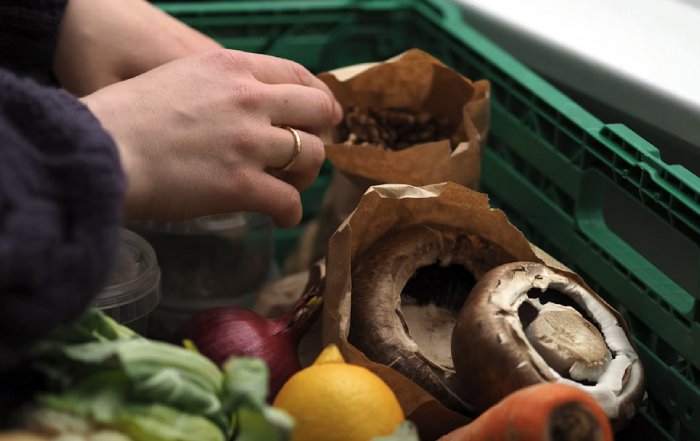The Strategic Benefits of Buying Secondhand Goods in 2025
Secondhand as a Core Pillar of Modern Sustainability
By 2025, buying secondhand goods has evolved from a niche, budget-conscious choice into a central strategy for organizations, households and communities seeking to align environmental responsibility with economic resilience. Around the world, from the United States and the United Kingdom to Germany, Singapore, South Africa and Brazil, the rapid rise of recommerce platforms, curated resale boutiques and circular business models is reshaping how value is created, perceived and preserved. For eco-natur.com, which has long championed responsible consumption and regenerative lifestyles, the secondhand economy is no longer just an interesting trend; it is a foundational element of a credible sustainability strategy that touches resource use, climate impact, social equity and long-term business competitiveness.
Global institutions such as the United Nations Environment Programme highlight that material extraction and processing account for a substantial share of global greenhouse gas emissions and biodiversity loss, underscoring how extending the life of existing products can significantly reduce pressure on ecosystems. Learn more about sustainable business practices to understand how secondhand strategies integrate into broader corporate and policy frameworks. As organizations and individuals in Europe, Asia, North America, South America and Africa confront rising resource constraints and climate risk, secondhand purchasing is emerging as a practical, measurable way to operationalize sustainability goals while delivering tangible financial and social benefits.
Environmental Impact: Extending Product Life and Reducing Resource Use
The environmental rationale for buying secondhand is rooted in the simple but powerful principle of product life extension. Every time a consumer or business in Canada, Australia, Japan or Brazil opts for a pre-owned item rather than a newly manufactured one, they effectively avoid the resource extraction, energy use, manufacturing emissions and transport impacts associated with producing a new product. Organizations such as the Ellen MacArthur Foundation have demonstrated how circular models, including reuse and resale, can dramatically reduce waste and emissions by decoupling economic activity from the consumption of finite resources. Readers can explore the broader implications of these ideas through the lens of sustainability, where product life cycles and material flows are at the heart of systemic change.
In sectors such as fashion, electronics, furniture and even construction materials, lifecycle assessments published by research institutions and agencies like the European Environment Agency show that the majority of environmental impacts occur during raw material extraction and initial manufacturing. By choosing secondhand, consumers in the Netherlands, France, Italy and Spain effectively amortize those initial impacts over a longer timeframe, reducing the per-year environmental footprint of the product. Learn more about sustainable living to see how these purchasing decisions integrate with energy use, mobility and food choices in a holistic low-impact lifestyle.
Secondhand purchasing also plays a crucial role in reducing waste and easing the burden on landfills and incineration facilities, which remain pressing issues in regions from the United States and the United Kingdom to South Africa and Malaysia. Reports from organizations such as the World Bank on global waste generation highlight that municipal solid waste is expected to grow significantly through 2050 if current patterns persist. By keeping products in circulation through reuse and resale, communities contribute to more effective recycling and waste prevention strategies, thereby reducing the need for new landfills, lowering methane emissions from decomposing materials and minimizing the environmental risks associated with waste mismanagement.
Climate Benefits: Lowering Emissions through Circular Choices
In 2025, climate-conscious decision-making has become a core expectation for businesses and consumers in regions as diverse as Scandinavia, East Asia, North America and Oceania, and buying secondhand is increasingly recognized as a climate action lever that is both accessible and scalable. Analyses by the Intergovernmental Panel on Climate Change (IPCC) and national environment agencies consistently emphasize that demand-side measures, including product life extension and reuse, can deliver meaningful emission reductions alongside renewable energy deployment and efficiency improvements. Those exploring renewable energy will recognize that while clean power is essential, reducing the need for new products is an equally important complement to decarbonization efforts.
When a secondhand laptop, smartphone, office chair or industrial machine is purchased in Germany, Singapore or South Korea, the avoided emissions associated with manufacturing and shipping a new item can be significant, especially in carbon-intensive supply chains. Organizations like Carbon Trust and the World Resources Institute have documented how product-level carbon footprints are heavily influenced by raw materials such as metals, plastics and textiles, which often require energy-intensive extraction and processing. By supporting reuse, both individuals and companies contribute to climate mitigation strategies aligned with science-based targets and net-zero commitments. Those interested in how these choices fit into broader economic transformations can explore sustainable economy insights that connect consumption, production and climate policy.
In addition, secondhand purchasing can reduce the demand for fast-moving, short-lived products that drive overproduction and overconsumption, particularly in sectors like fast fashion and consumer electronics. Organizations such as the World Wildlife Fund (WWF) and the International Energy Agency (IEA) have raised concerns about the energy and resource intensity of these industries, and have pointed to circular strategies, including resale and refurbishment, as key components of climate-resilient business models. When companies integrate secondhand channels into their operations, whether by offering certified refurbished products or partnering with recommerce platforms, they demonstrate climate leadership that resonates with increasingly discerning stakeholders across Europe, Asia and the Americas.
Reducing Plastic and Waste: Secondhand as a Tool for a Circular Materials Economy
Plastic pollution has become a defining environmental issue of the past decade, affecting marine ecosystems, freshwater systems and terrestrial environments from the Arctic to Southeast Asia, and secondhand purchasing is one of the most direct ways to reduce the flow of new plastic into the global economy. By choosing pre-owned household goods, toys, outdoor gear and packaging-free secondhand items, consumers in the United States, Thailand, Norway and beyond can significantly lower their contribution to plastic demand. Those seeking to transition toward a plastic-free lifestyle will find that secondhand markets often provide durable, long-lasting alternatives to cheaply made plastic products that are prone to rapid disposal.
Organizations such as the United Nations Environment Programme and the OECD have documented the scale of plastic production and waste, noting that only a small fraction of plastic is effectively recycled, while large volumes leak into oceans, rivers and soils. Secondhand purchasing reduces the need for virgin plastic production and helps keep existing plastic-containing products in use for longer, thereby decreasing the volume of waste requiring collection and treatment. When combined with robust zero-waste strategies, reuse and resale become powerful levers for shifting from a linear "take-make-dispose" model toward a circular materials economy in which waste is minimized and value is retained.
Moreover, secondhand purchasing supports local repair, refurbishment and upcycling ecosystems, which can transform potential waste into valuable resources. Platforms, community initiatives and social enterprises across Europe, Africa and Latin America are demonstrating how creative reuse of textiles, furniture and electronics can not only reduce environmental impacts but also generate employment and skills development opportunities. Research by the International Labour Organization (ILO) indicates that circular economy activities, including repair and resale, can support decent work when supported by appropriate policy frameworks and training. For businesses and households committed to a more regenerative approach to consumption, secondhand goods offer a practical entry point into a more resource-efficient and socially inclusive future.
Protecting Wildlife and Biodiversity through Conscious Consumption
The benefits of secondhand purchasing extend beyond waste and emissions into the critical realm of wildlife and biodiversity protection. The extraction of raw materials, expansion of agriculture and infrastructure development required to sustain ever-growing production of new goods are primary drivers of habitat loss and ecosystem degradation in regions from the Amazon and Congo basins to Southeast Asian forests and European wetlands. By choosing secondhand furniture, clothing, electronics and household goods, consumers help reduce the pressure for new resource frontiers and the associated encroachment on natural habitats. Those interested in the connection between consumption and species conservation can explore wildlife and biodiversity perspectives that highlight the importance of demand-side solutions.
Reports from organizations such as the Intergovernmental Science-Policy Platform on Biodiversity and Ecosystem Services (IPBES) and Conservation International stress that current patterns of resource use are unsustainable and that transformative change in production and consumption systems is needed to halt and reverse biodiversity decline. Secondhand purchasing is a concrete expression of this transformation, as it signals a societal shift away from the constant creation of new products and toward the stewardship of existing ones. By reducing the need for new mining, logging, intensive agriculture and large-scale infrastructure, secondhand markets contribute indirectly but meaningfully to the protection of ecosystems and species across continents.
At the same time, secondhand purchasing helps mitigate the impacts of pollution, including chemical and plastic contamination, which can harm wildlife in marine, freshwater and terrestrial environments. Organizations such as the World Wide Fund for Nature (WWF) and the International Union for Conservation of Nature (IUCN) have documented the ways in which pollutants associated with production and disposal can accumulate in food webs, affecting everything from plankton to apex predators. By keeping products in circulation longer and reducing waste, secondhand consumption supports the broader goals of biodiversity protection, demonstrating how individual and business-level choices can align with global conservation priorities.
Economic and Business Advantages of the Secondhand Market
From a business and economic perspective, the rise of secondhand and recommerce markets represents both a strategic opportunity and a competitive imperative in 2025. In major economies such as the United States, China, Germany and the United Kingdom, the resale sector has grown into a multi-billion-dollar segment, with platforms and retailers leveraging data analytics, logistics innovations and digital marketplaces to capture value from existing products. Analyses by organizations such as McKinsey & Company and the World Economic Forum highlight how circular business models, including secondhand sales and product-as-a-service offerings, can unlock new revenue streams, enhance customer loyalty and reduce exposure to volatile raw material prices. Learn more about sustainable business models that integrate resale and reuse into long-term strategies.
For small and medium-sized enterprises across Europe, Asia-Pacific, Africa and Latin America, secondhand purchasing and selling can improve cash flow management and reduce capital expenditures. By acquiring pre-owned equipment, furniture and technology, businesses can lower upfront costs while still accessing high-quality assets, freeing resources for innovation, training and market expansion. Institutions such as the OECD and the World Bank have emphasized the role of resource efficiency and circularity in enhancing the resilience and competitiveness of SMEs, particularly in emerging markets where access to affordable capital is constrained. For these businesses, participation in secondhand markets is not only an environmental choice but also a pragmatic economic strategy that supports growth and stability.
The secondhand economy also fosters local entrepreneurship and job creation, as repair shops, refurbishment centers, vintage stores and online resale platforms proliferate in cities from Toronto and Melbourne to Nairobi and São Paulo. Research from the International Labour Organization (ILO) and various national statistics agencies indicates that circular economy activities can generate employment across skill levels, from entry-level positions in sorting and logistics to specialized roles in repair, design and digital platform management. By supporting secondhand markets, communities can stimulate local economies, build resilience against global supply chain disruptions and create inclusive opportunities aligned with the principles of sustainable living and lifestyle.
Social Equity, Access and Community Benefits
Beyond environmental and economic metrics, secondhand purchasing delivers important social benefits, particularly in terms of affordability, access and community cohesion. In many countries, including the United States, Canada, South Africa and Brazil, secondhand markets provide lower-income households with access to quality clothing, furniture, books, electronics and household goods that might otherwise be out of reach. Organizations such as Oxfam, Goodwill Industries and community-based initiatives across Europe and Asia have long demonstrated how resale and donation models can support social inclusion, education and poverty alleviation efforts. These organizations reinforce the idea that sustainable consumption must be inclusive, ensuring that environmental progress does not come at the cost of social equity.
The growth of community-driven secondhand initiatives, such as swap events, repair cafés and local online marketplaces, also strengthens social ties and fosters a culture of mutual support and shared responsibility. Studies from institutions like the London School of Economics and various urban research centers suggest that such community-based activities can enhance social capital, build trust and encourage collaborative problem-solving around sustainability challenges. For readers interested in how personal well-being intersects with environmental choices, health and sustainability insights provide further context on the psychological and social benefits of engaging in collective, values-based consumption practices.
In addition, secondhand purchasing can contribute to educational outcomes and cultural preservation, as pre-owned books, musical instruments, art and cultural artifacts circulate through schools, libraries, community centers and digital platforms. Access to affordable learning materials and creative tools supports lifelong learning and innovation, particularly in regions where educational resources are unevenly distributed. Organizations such as UNESCO and various national education ministries have underscored the importance of equitable access to educational materials, and secondhand markets can play a complementary role in achieving these goals by making learning resources more widely available and affordable.
Secondhand and Organic, Healthy Lifestyles
While secondhand purchasing is primarily associated with durable goods, it also intersects with broader lifestyle choices related to food, health and well-being. Households committed to organic and regenerative food systems often extend their values to how they acquire kitchen equipment, storage containers, gardening tools and household textiles, opting for pre-owned, high-quality items that support low-toxicity, low-waste living. Those exploring organic food and sustainable diets will recognize that the same principles guiding food choices-such as minimizing chemical exposure, supporting local producers and reducing environmental impact-can apply to non-food products through secondhand purchasing.
Organizations such as the Food and Agriculture Organization (FAO) and the World Health Organization (WHO) have highlighted the health and environmental benefits of diets rich in plant-based and organic foods, and these recommendations often align with broader sustainable lifestyle frameworks that prioritize durability, repairability and minimal waste. By choosing secondhand cookware, storage jars, textiles and furniture made from natural materials, consumers in France, Italy, Spain, the Nordic countries and beyond can create home environments that support both physical health and ecological integrity. This integrated approach to consumption reinforces the idea that personal well-being and planetary health are closely linked, and that secondhand purchasing is a practical tool for achieving alignment between the two.
Secondhand purchasing also supports mental well-being by encouraging more intentional, reflective consumption patterns. Rather than engaging in impulsive buying of new items, individuals who seek out pre-owned goods often invest more time in researching, comparing and understanding the stories behind the products they acquire. This slower, more mindful approach can reduce stress, foster appreciation for craftsmanship and history, and contribute to a sense of authenticity and individuality that mass-produced goods often lack. For those interested in the broader implications of these shifts, global sustainability perspectives offer insights into how cultural attitudes toward consumption are evolving in different regions and what this means for future lifestyle trends.
Building Trust, Quality and Transparency in Secondhand Markets
Trust and perceived quality are central to the continued expansion of secondhand markets, particularly among professional and business audiences who require reliability, traceability and performance guarantees. In 2025, leading companies and platforms are investing in verification systems, product grading standards, warranties and transparent data to build confidence among buyers in the United States, Europe, Asia and beyond. Organizations such as GS1, which manages global product identification standards, and technology firms specializing in blockchain and digital passports are contributing to systems that can track product histories, authenticate items and document repairs, thereby enhancing trust in pre-owned goods.
For businesses, incorporating secondhand purchasing into procurement policies requires clear criteria for quality, safety and compliance, as well as strategic partnerships with reputable vendors and refurbishers. Guidance from entities such as the International Organization for Standardization (ISO) and national standards bodies can support the development of robust frameworks for assessing secondhand products, particularly in sectors such as IT, industrial equipment and office furnishings. As more organizations publish sustainability and circularity commitments, including through platforms like the Global Reporting Initiative (GRI), transparent reporting on secondhand procurement and resale activities will become a key component of demonstrating genuine environmental and social performance.
For eco-natur.com, which is committed to promoting credible, evidence-based sustainability practices, highlighting best-in-class examples of trustworthy secondhand platforms, corporate programs and community initiatives is essential to building confidence among readers and partners. By connecting audiences to resources on sustainable design and product innovation, the platform can help bridge the gap between theory and practice, showing how design for durability, repairability and modularity can enhance the long-term value and reliability of products destined for multiple ownership cycles.
Integrating Secondhand into Strategy: From Individual Action to Systemic Change
The benefits of buying secondhand goods are multidimensional, spanning environmental protection, climate mitigation, waste reduction, wildlife conservation, economic resilience, social equity and personal well-being. Yet the full potential of secondhand markets will only be realized when these practices are integrated into coherent strategies at the individual, organizational and policy levels. For individuals and households across continents, this means embedding secondhand choices into everyday routines, from clothing and furniture to electronics and recreational equipment, and aligning these decisions with broader commitments to sustainable living and low-impact lifestyles.
For businesses in sectors as varied as retail, manufacturing, technology and real estate, secondhand purchasing and resale should be viewed as core components of circular value chains rather than peripheral or temporary initiatives. This involves rethinking product design, logistics, customer relationships and revenue models to accommodate multiple product life cycles, as well as collaborating with partners across the value chain to build robust, transparent and scalable recommerce ecosystems. Strategic guidance from organizations such as the World Business Council for Sustainable Development (WBCSD) and leading academic institutions can support this transition, helping companies align secondhand strategies with climate targets, ESG frameworks and stakeholder expectations.
For policymakers and civic leaders in Europe, Asia, Africa, North America and South America, supporting secondhand markets requires a combination of regulatory clarity, fiscal incentives, infrastructure investment and public awareness campaigns. This may include tax incentives for repair and refurbishment, clear standards for product safety and liability, and support for community-based reuse and sharing initiatives. As global institutions such as the United Nations and the OECD continue to advocate for circular economy transitions, secondhand purchasing will remain a central, measurable indicator of progress toward more sustainable, inclusive and resilient societies.
In this evolving landscape, eco-natur.com serves as a trusted guide and resource hub, connecting readers to practical tools, analytical insights and inspiring examples that demonstrate how secondhand purchasing can be integrated into every aspect of life and business. By exploring topics such as sustainability, recycling, organic food and sustainable business, audiences worldwide can build a coherent, actionable understanding of how their choices-individually and collectively-can shape a more regenerative and equitable future in 2025 and beyond.








